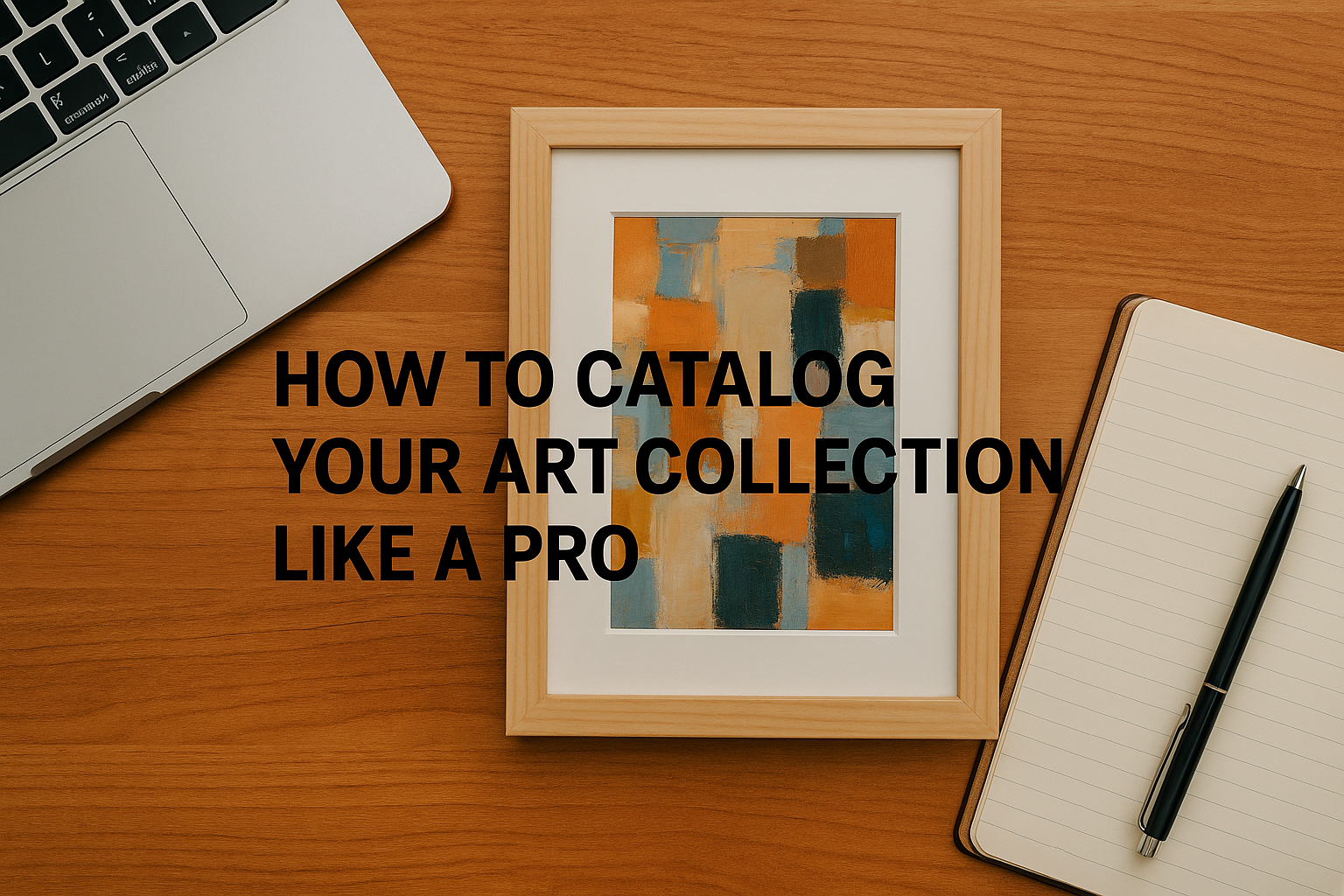Whether you’re just starting your collection or have been collecting for years, proper cataloging turns your art into an accessible, searchable, and sharable archive. Here’s how to organize your collection like a professional registrar or archivist.
1. Start with a System

Choose your cataloging platform. This could be a spreadsheet, an app like ArtVault, or a professional art database.
Key details to track:
- Title
- Artist name
- Year
- Medium
- Dimensions
- Purchase date and price
- Current value
- Location (e.g. home, storage, on loan)
- Condition notes
- Certificate of Authenticity info
2. Organize by Type, Date, or Artist

Decide how you’ll group your pieces. Many collectors sort by:
- Artist name (A–Z)
- Year of acquisition
- Medium (print, painting, sculpture, etc.)
- Theme or subject
Staying consistent helps you find things fast and spot gaps in your collection.
3. Photograph Every Piece

Clear, consistent photos are essential for insurance, inventory, or future resale.
Tips for pro-level photos:
- Use natural light or diffused lighting to avoid glare
- Shoot against a neutral background
- Capture full artwork and close-up details (signatures, texture)
- Include a ruler or object for scale if needed
4. Store Important Documents

Scan and attach paperwork to each record, including:
- Certificates of authenticity
- Invoices/receipts
- Exhibition records
- Insurance appraisals
Having everything in one place can save hours later.
5. Track Provenance and Exhibitions
Document where a piece has been shown or published. If the artist is emerging, this adds long-term value and credibility.

6. Set Your Privacy Preferences
Some platforms let you keep records private or public. Decide which pieces you want to share—and which to keep off the radar.
7. Back It All Up
Whether you’re using a cloud-based app or a local file, make sure your data is backed up. Use Google Drive, Dropbox, or physical storage as a secondary backup.
Bonus Tip: Keep It Updated
Schedule a time every 3–6 months to review your collection. Add new pieces, update values, and document any condition changes.
Start Today
Even if your collection is small, the sooner you start cataloging, the easier it becomes. As your collection grows, you’ll thank yourself for having a solid system in place.
Need help? Try ArtVault, a collector-centric tool to track and organize your artwork.
